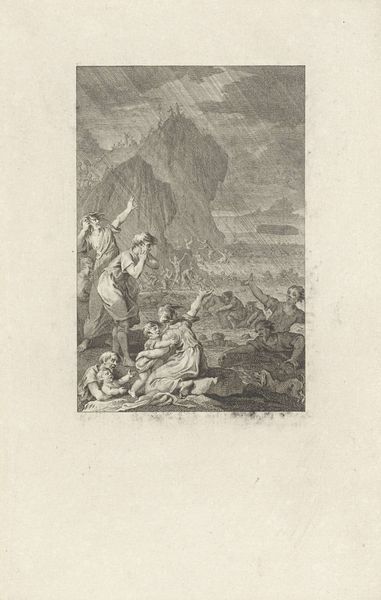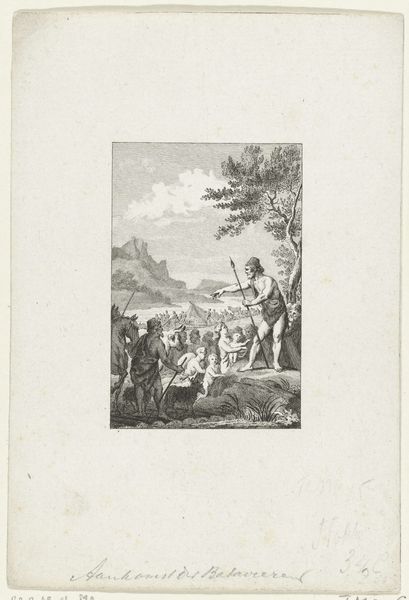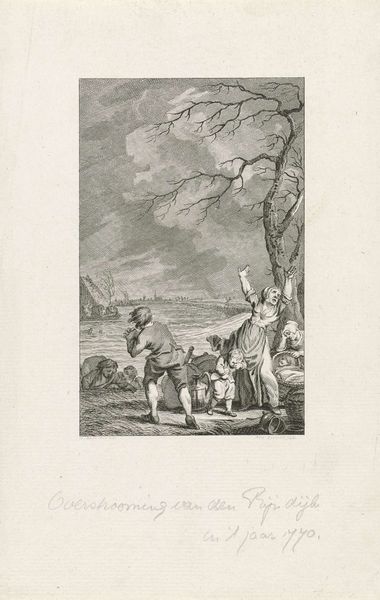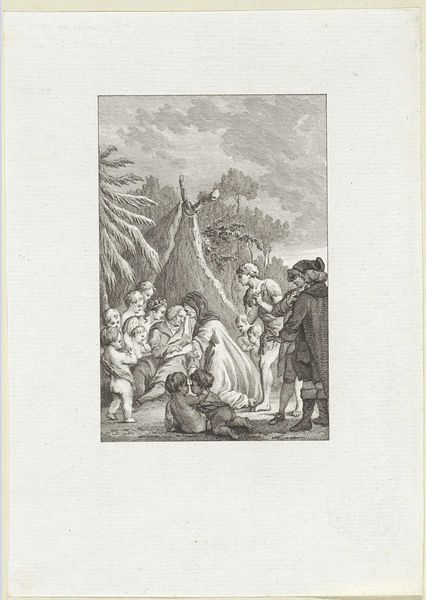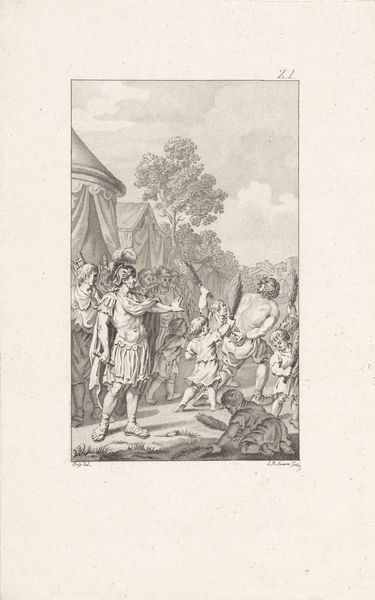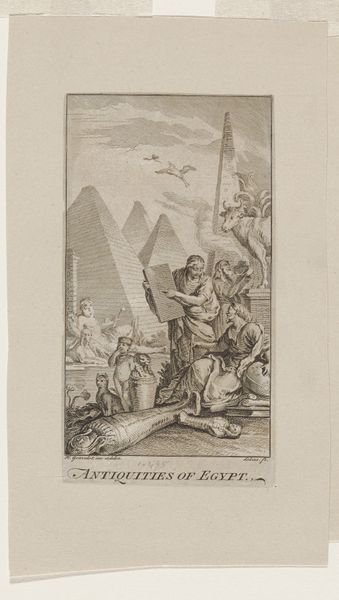
print, engraving
#
neoclacissism
# print
#
old engraving style
#
figuration
#
line
#
history-painting
#
engraving
Dimensions: height 217 mm, width 133 mm
Copyright: Rijks Museum: Open Domain
Ludwig Gottlieb Portman captured the death of Marcus Crassus in this engraving. Crassus’s demise is marked not just by physical collapse, but also by symbolic gestures of defeat and desperation. Note Crassus on horseback, arm raised, as if pleading, the universal gesture of supplication that transcends cultures. We find similar gestures in medieval depictions of saints and even in ancient Egyptian art. These enduring motifs speak to primal human emotions. Consider, too, the motif of the fallen leader. Here, Crassus is dragged off of his horse, a powerful symbol of the transience of power, evoking images of defeated kings throughout history. It's a scene that stirs deep within us, resonating with our collective memory of mortality and the fallibility of even the mightiest. Thus, Portman's engraving is not just a depiction of a historical event. It's an exploration of timeless themes, a reminder of how symbols evolve, adapt, and continue to speak to us across the ages.
Comments
No comments
Be the first to comment and join the conversation on the ultimate creative platform.




